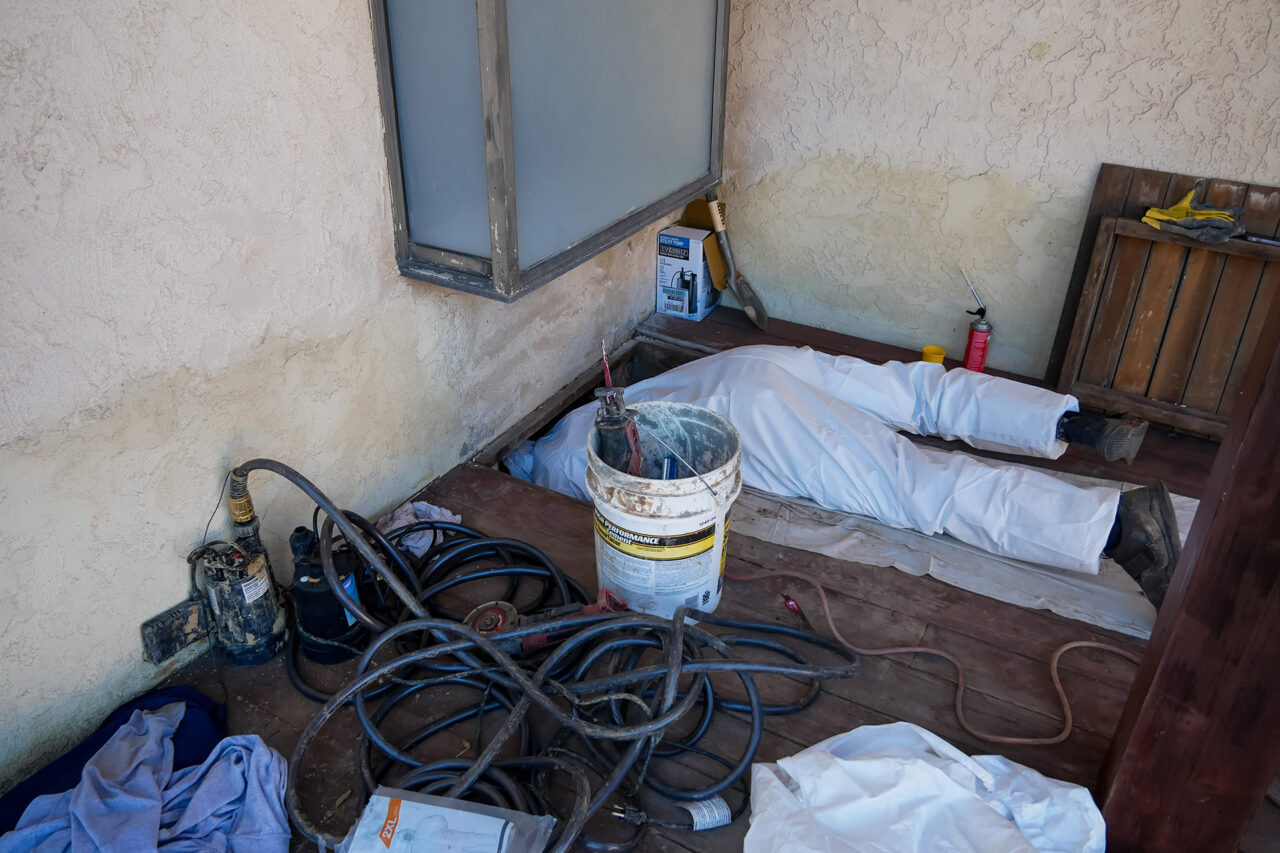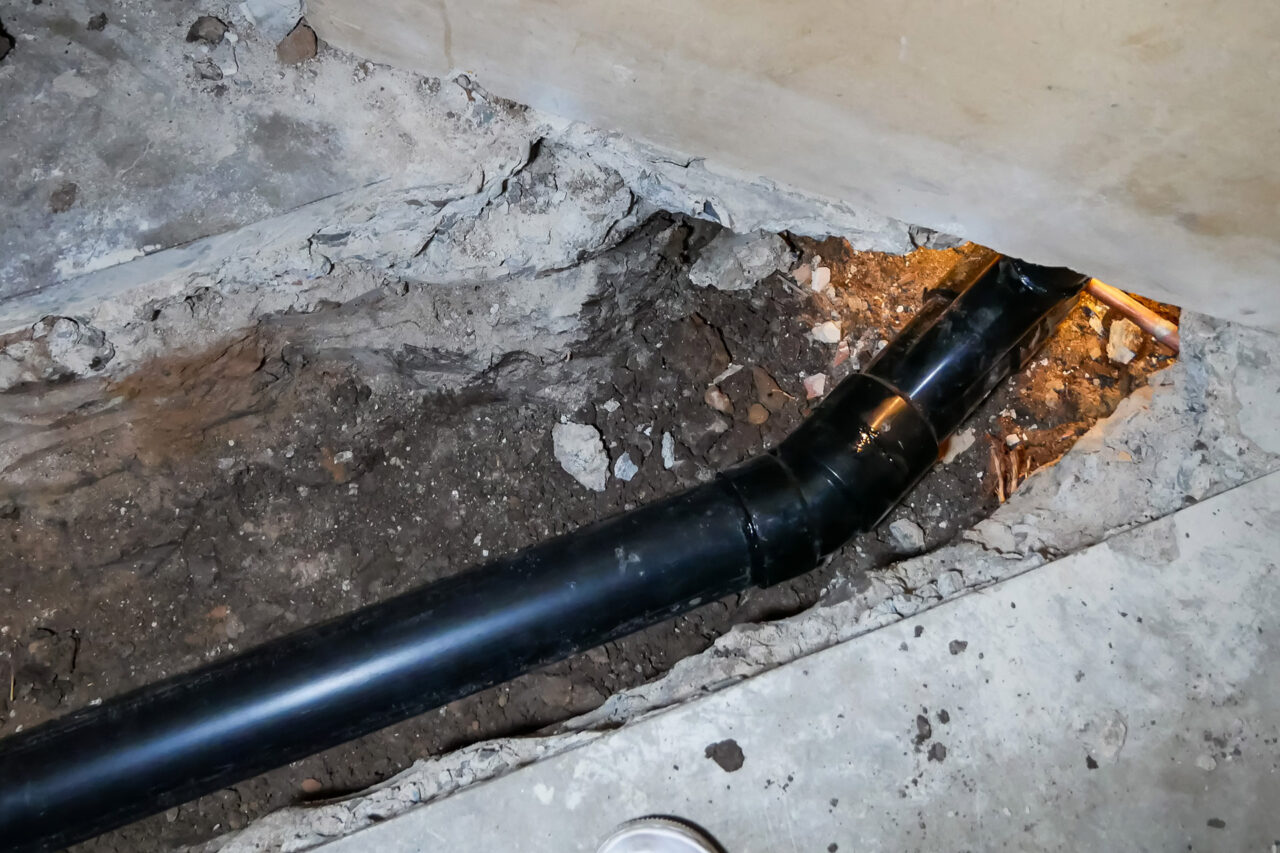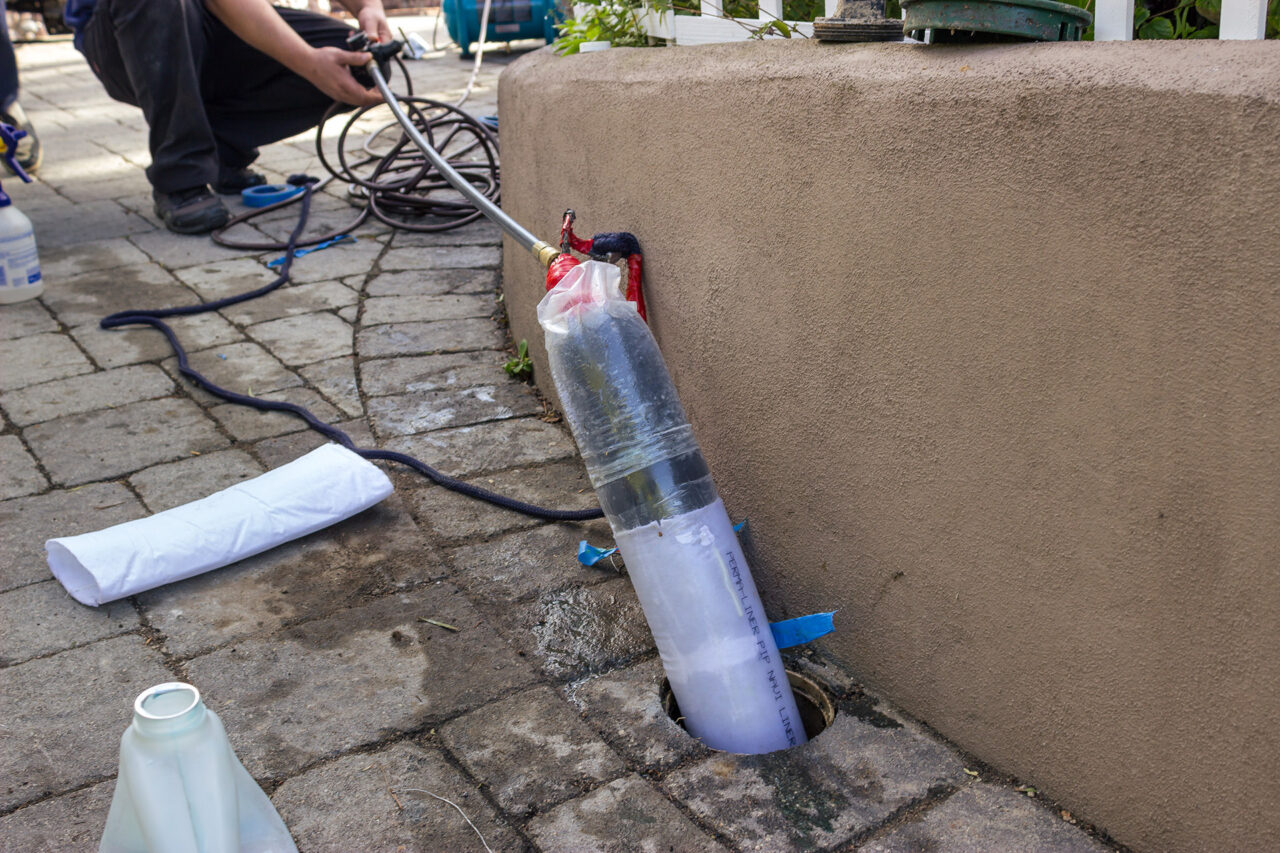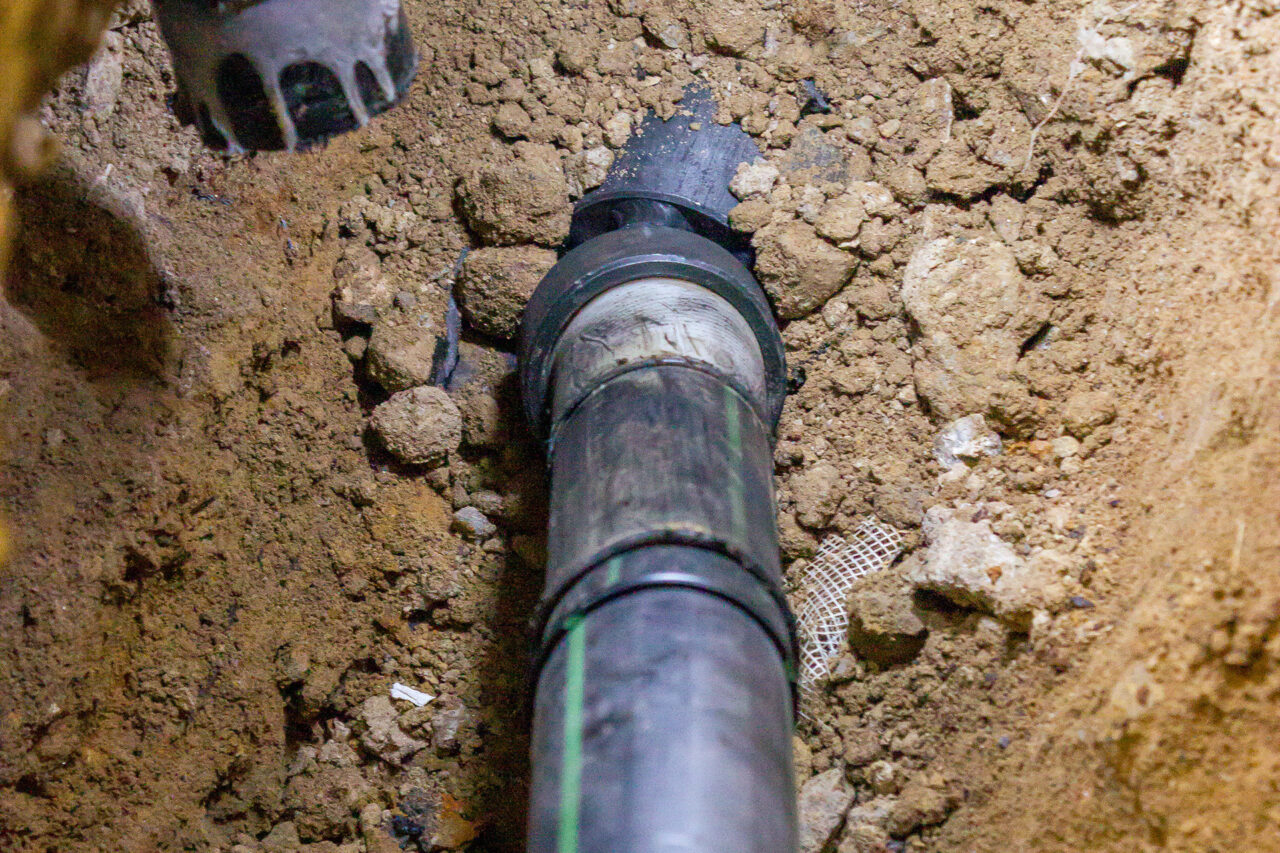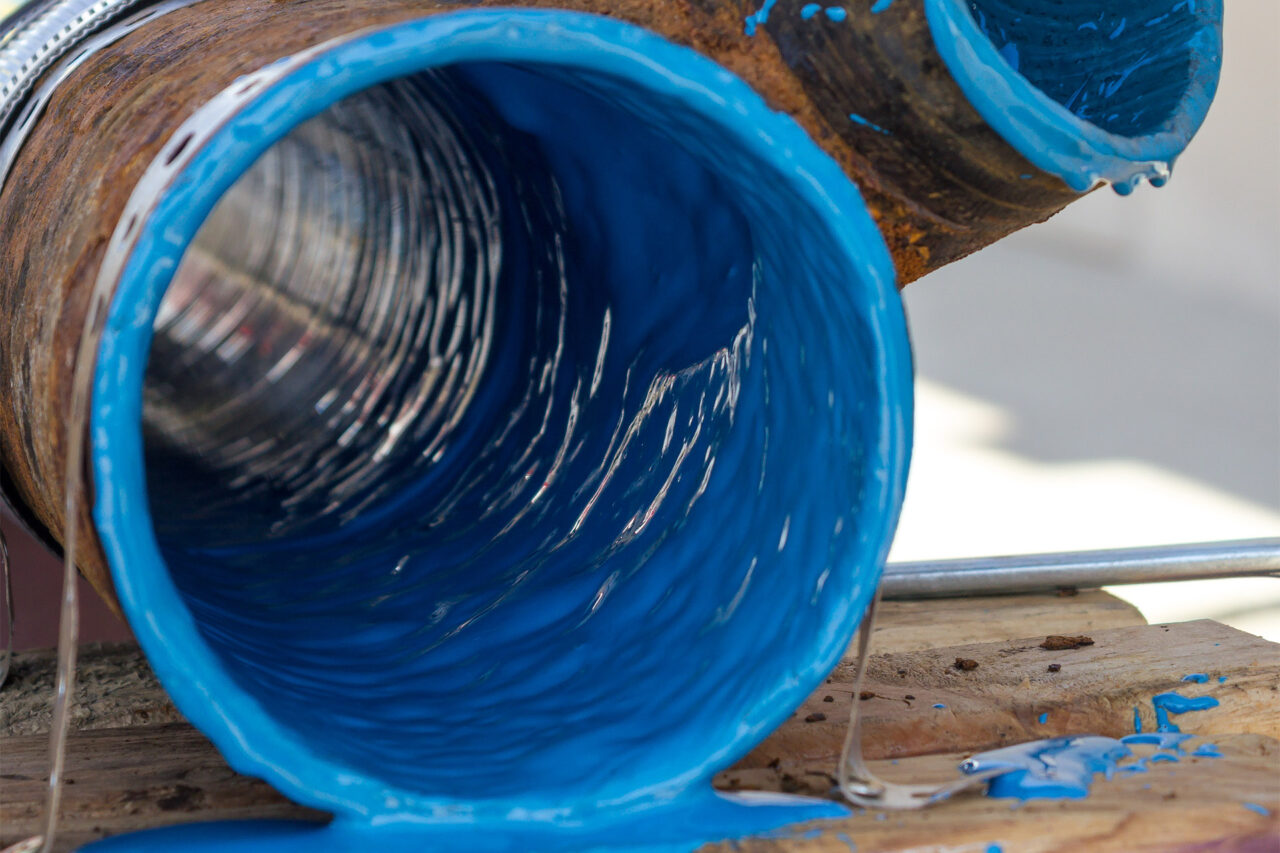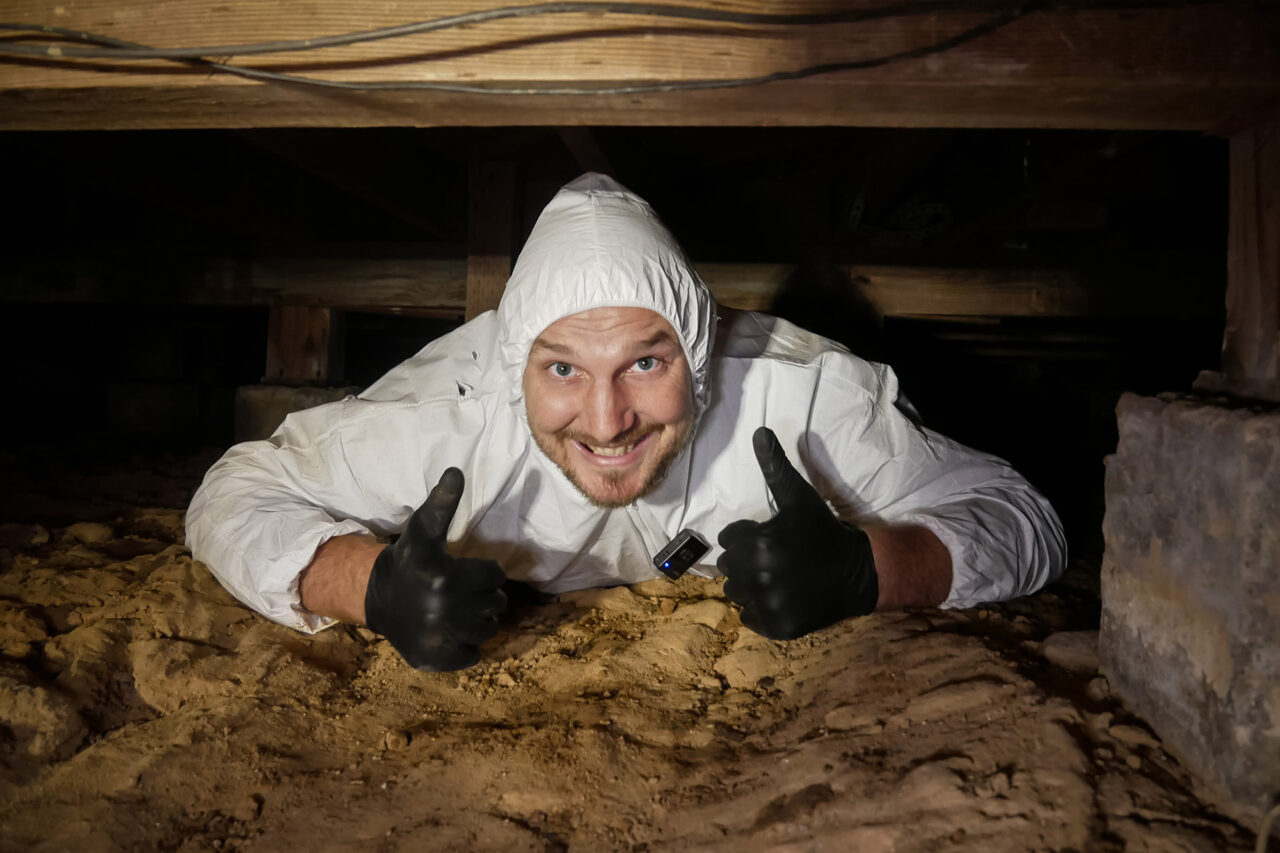How to Fix a Broken Sewer Pipe Under Your House: A Step-by-Step Guide
A broken sewer pipe under your home is a problem that can quickly become a serious—and expensive—challenge. From foul odors and slow drains to structural damage and health hazards, ignoring the problem is never a good idea. However, by understanding the basics, you may be able to fix a broken sewer pipe or make an informed decision about hiring a professional. This step-by-step guide will show you how to identify a damaged sewer line, taking into account different types of home foundations—such as crawl spaces, and slab-on-grade. We’ll also cover modern trenchless repair methods that can save time and minimize disruption to your home.Contents
Common Signs of a Broken Sewer Line Under Your Home
A damaged sewer line under your home can cause more than just plumbing problems—it can affect your foundation, indoor air quality, and even your health. Here are some of the more common warning signs:- Sewage Smell Indoors: If you notice a strong, persistent sewage odor coming from floors, drains, or crawl spaces, it could indicate a break in the sewer line directly beneath your home.
- Gurgling Sounds in Drains: Strange gurgling or bubbling noises when using sinks, tubs, or toilets can mean there’s air trapped in the system—often caused by a leak or blockage in the main line.
- Frequent Drain Backups: A clogged drain may be a localized problem, but if multiple drains are backing up, especially in the lowest parts of your home, it is a strong indication of a sewer line problem.
- Wet or Soggy Floors: A cracked pipe under a slab foundation can allow water to seep up through the floor, causing damp spots, mold growth, or even visible puddles.
- Cracks or Shifting in the Foundation: If a sewer line leaks under the slab, it can soften the soil and cause parts of your foundation to settle unevenly, leading to cracks in the floor or walls.
- Unexplained Pest Activity: Sewer leaks can attract rodents, gnats, and insects. If you’re seeing a sudden increase in pests with no clear source, the problem may be coming from underneath the house.
If your sewer lines are made of old cast iron pipes, we recommend having them inspected. Replacing burst pipes after the ground under the house has become wet and flooded with sewage may cost two or three times more than replacing them beforehand. In such cases, you would first need to call a specialized company to pump out the dirt and sewage, which typically costs between $300 and $1,000. Only then can you proceed to repair the pipe itself.
Understanding Your Home’s Construction Type
Before starting any repairs, it’s important to know what type of foundation your home has. The method of accessing and repairing a broken sewer pipe varies depending on the foundation. Here’s a quick breakdown of the most common foundation types and how they affect your repair options.Crawl Space
Homes with crawl spaces are usually elevated above the ground, leaving a narrow space (typically 1 to 3 feet high) between the bottom of the house and the ground. What it means for repairs:- Easier access to pipes without major excavation
- Allows straightforward digging and pipe replacement
- Creates good conditions for traditional repair methods
Slab Foundation
With a slab foundation, your home sits directly on a poured concrete slab with no open space underneath. What this means for repairs:- Sewer pipes are embedded within or beneath the concrete slab
- Access often requires cutting through the slab, making repairs labor-intensive and expensive
- Trenchless methods, such as pipe lining or pipe bursting, are often preferred to avoid damaging the slab
How to Fix a Broken Sewer Pipe Step-by-Step
Once you’ve confirmed that there is a broken sewer line under your home and understand your home’s foundation, it’s time to begin repairs. Here’s a step-by-step breakdown to guide you.Step 1. Diagnose the Problem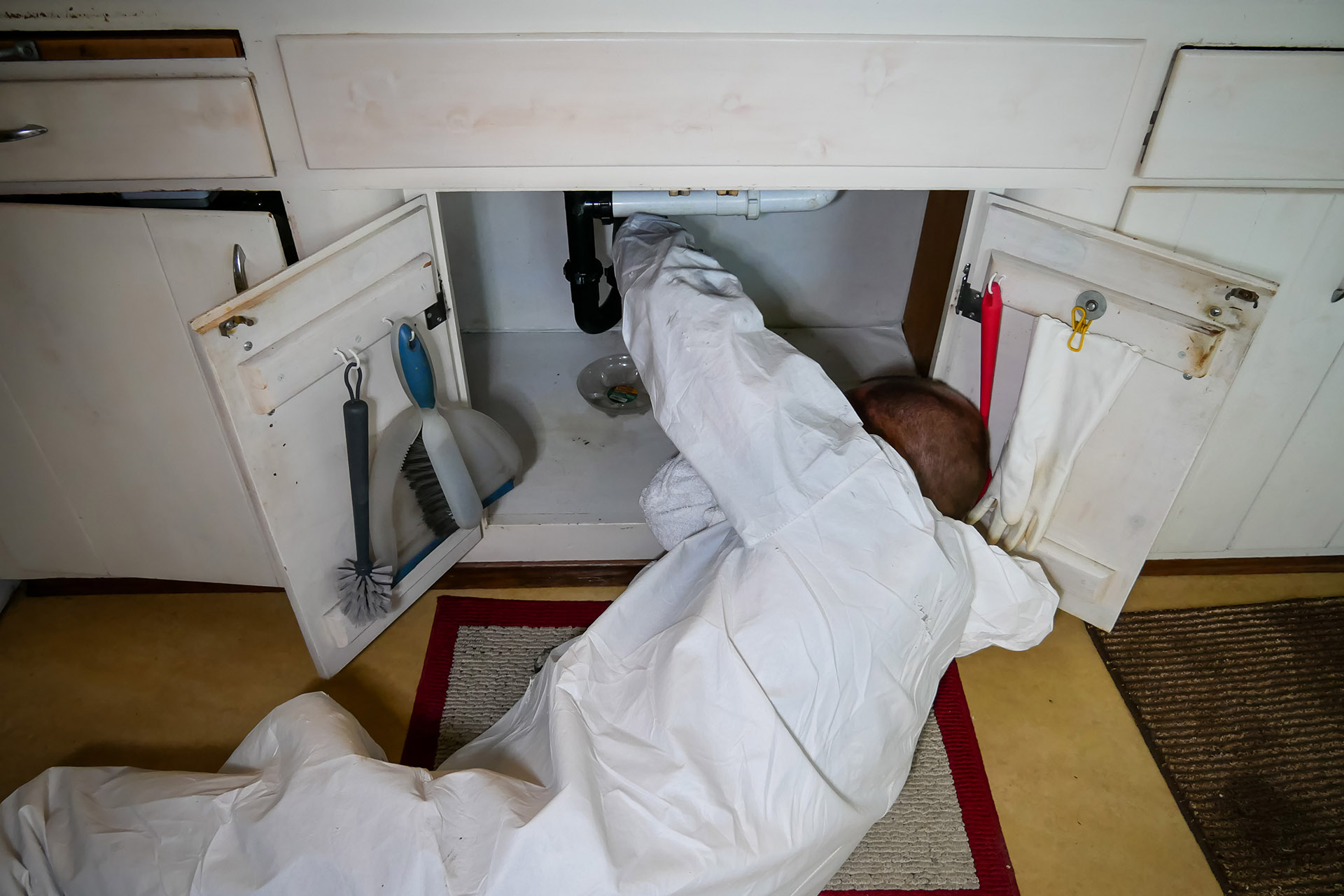

Before you start digging or cutting into anything, take time to locate the problem:
- Look for visible signs of water damage, mold, or leaks
- If possible, use a sewer inspection camera to locate the break
- Pay attention to where the pipe runs based on the layout of your home
Step 2. Prepare the Work Area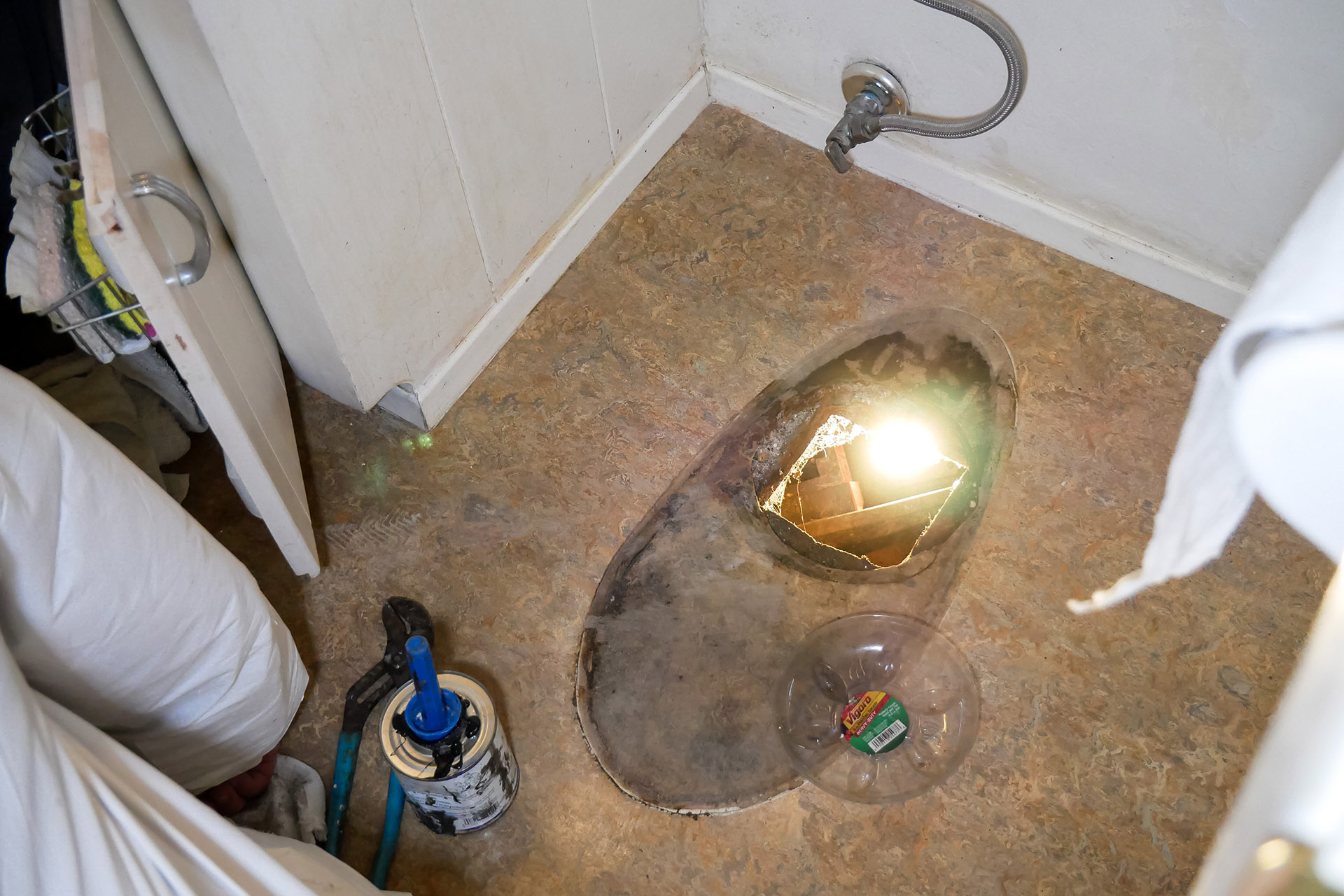

Safety and organization are key:
- Shut off the water supply to the affected line
- For homes with crawl spaces, remove the toilet and open the wall to reconnect the toilet vent to the existing vent inside the wall. Also, open the drywall under the sink to replace the sewer pipe running from the sink into the wall in the crawl space. The shower and bathtub can be connected to the vent within the crawl space
- Extend the cleanout outside for easier future maintenance
Step 3. Access the Pipe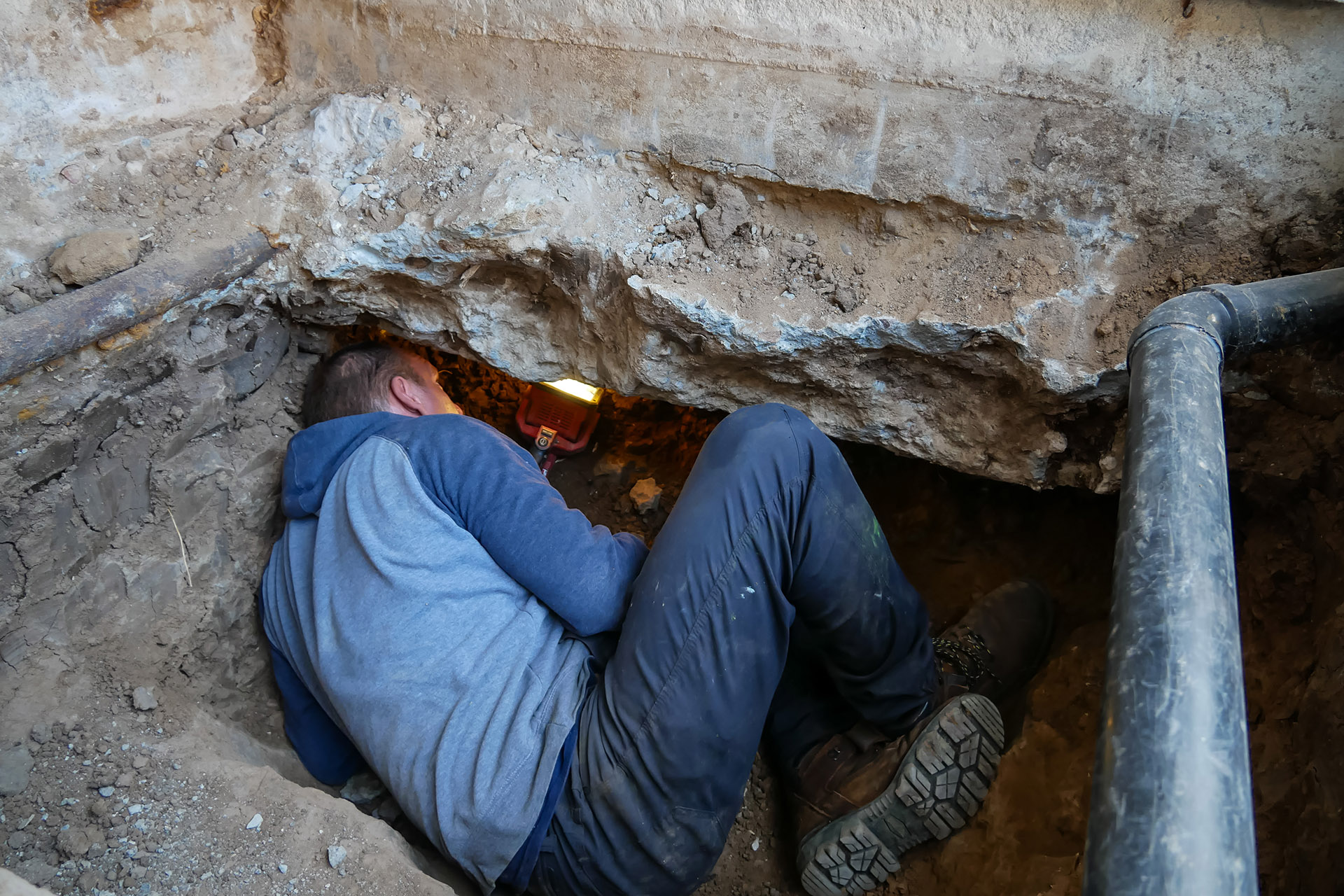

How you access the broken pipe depends on your foundation type:
- Crawl Space: May require minimal digging
- Slab Foundation: Use a concrete saw or jackhammer to cut through the slab
Step 4. Remove the Damaged Section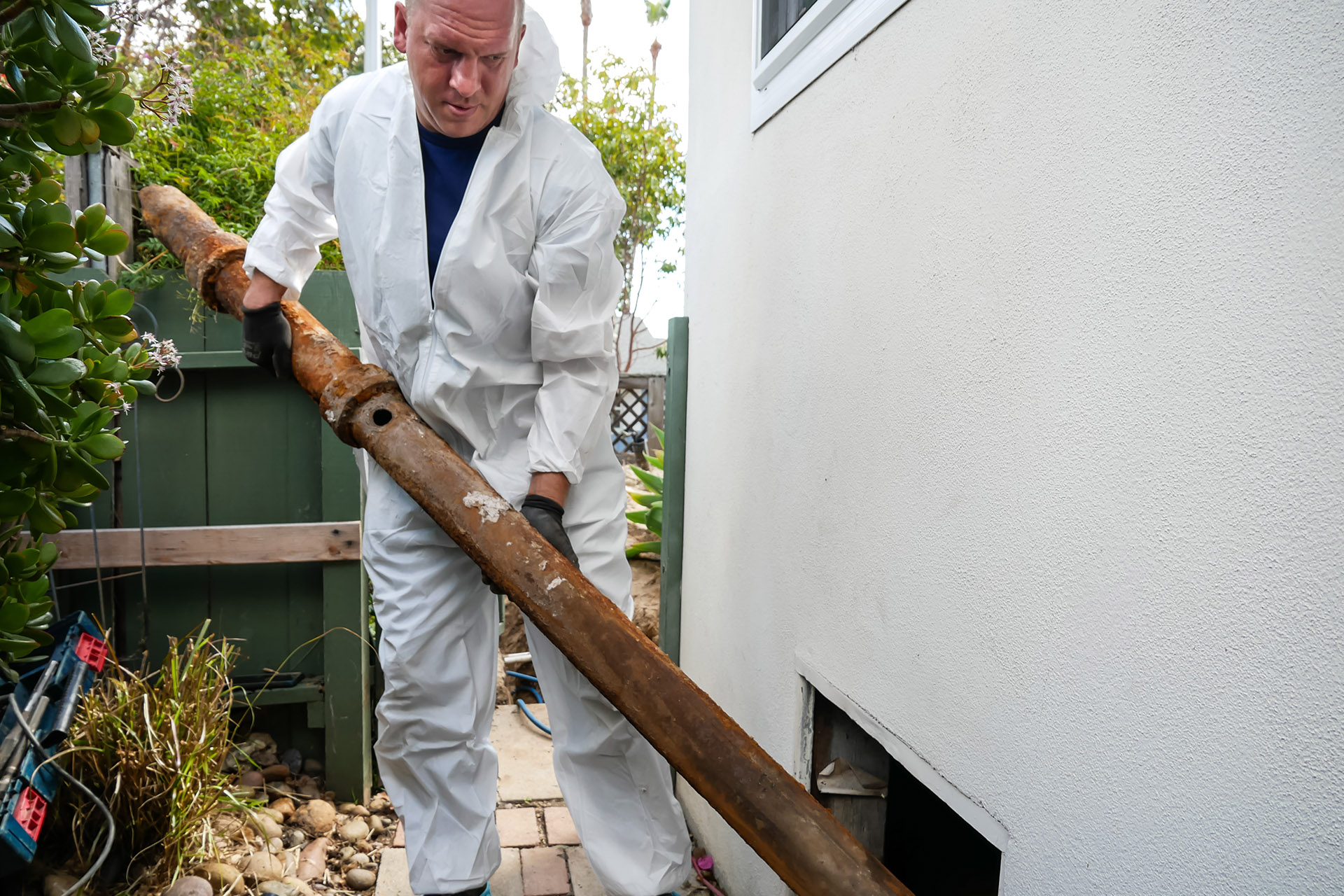

Once the pipe is exposed, remove the damaged section:
- Cut out the broken section with a pipe cutter or reciprocating saw
- Clean and smooth the ends of the remaining pipe to ensure a secure joint
- Properly dispose of old pipe and contaminated materials
Step 5. Install New Pipe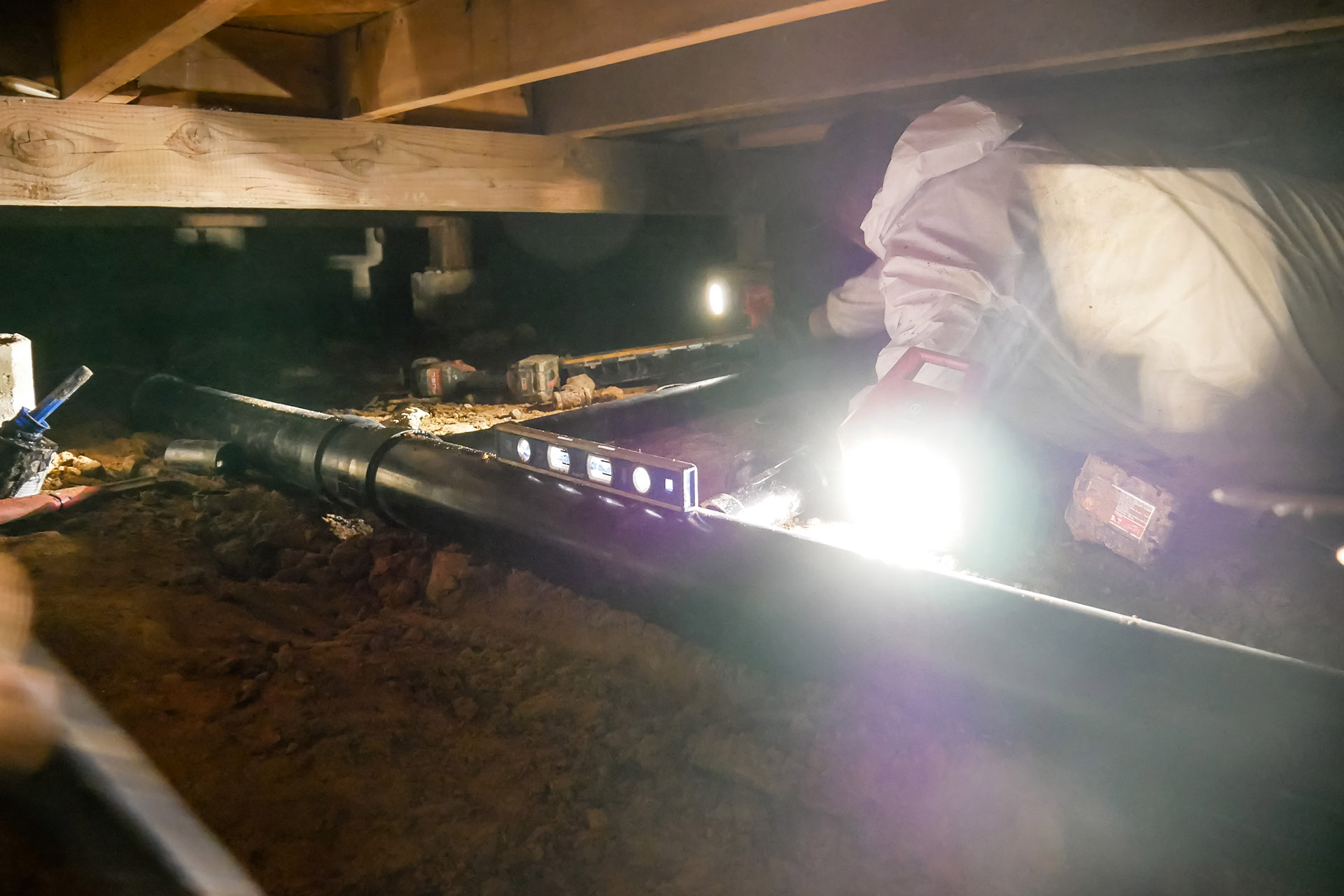

With the damaged section removed, install the replacement pipe:
- Measure and cut the new pipe to length
- Use couplings and solvent adhesive (for PVC) or Husky tape (for cast iron or ABS)
- Ensure proper slope (typically 1/4 inch per foot) to allow waste to flow smoothly toward the main line
Step 6. Test the Repair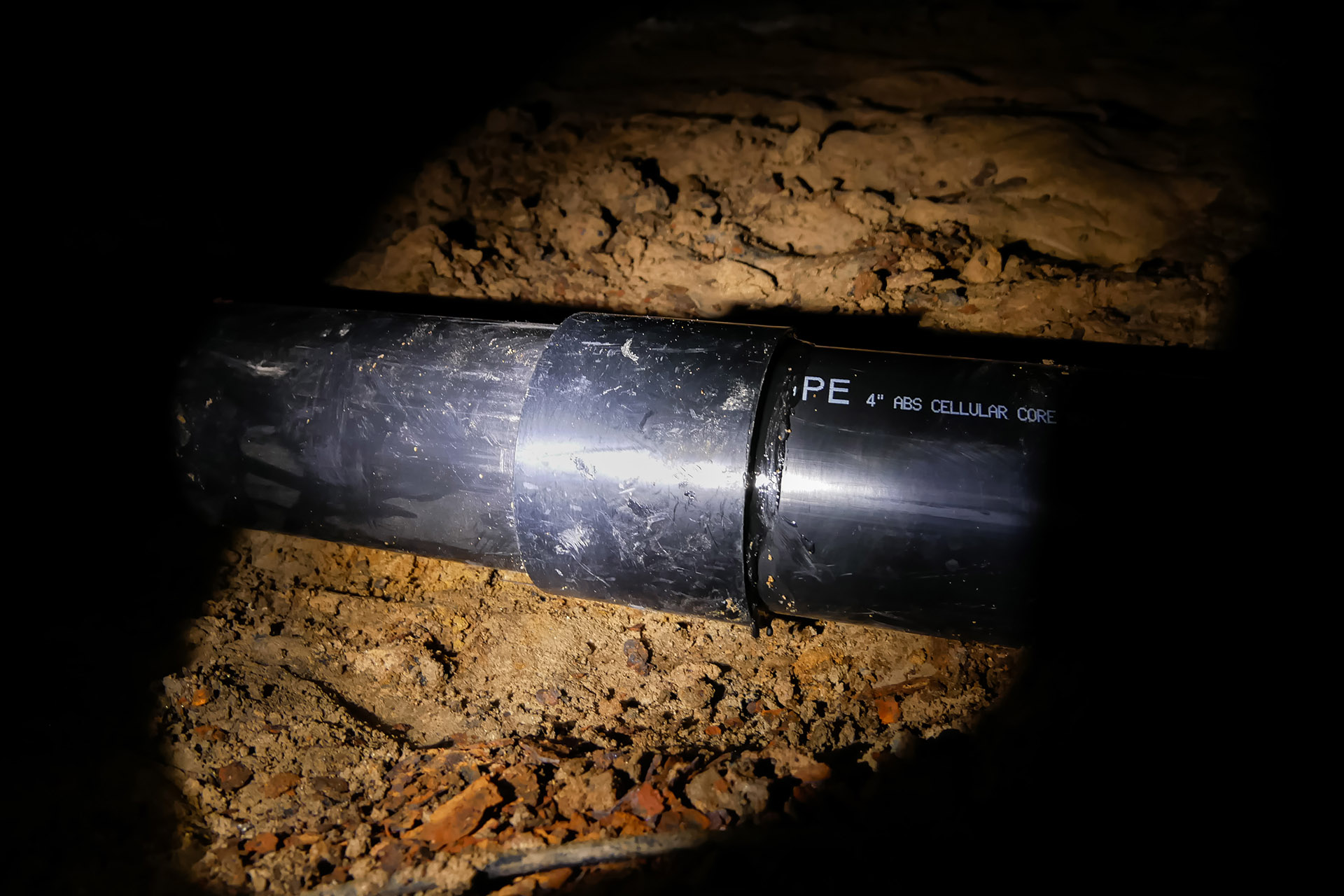

Before finishing, test the repair:
- Run water through the system and check carefully for leaks
- Inspect the repair from several access points, if possible, to ensure everything is dry and secure
- Allow adhesives or sealants to cure as recommended
Step 7. Fill & Restore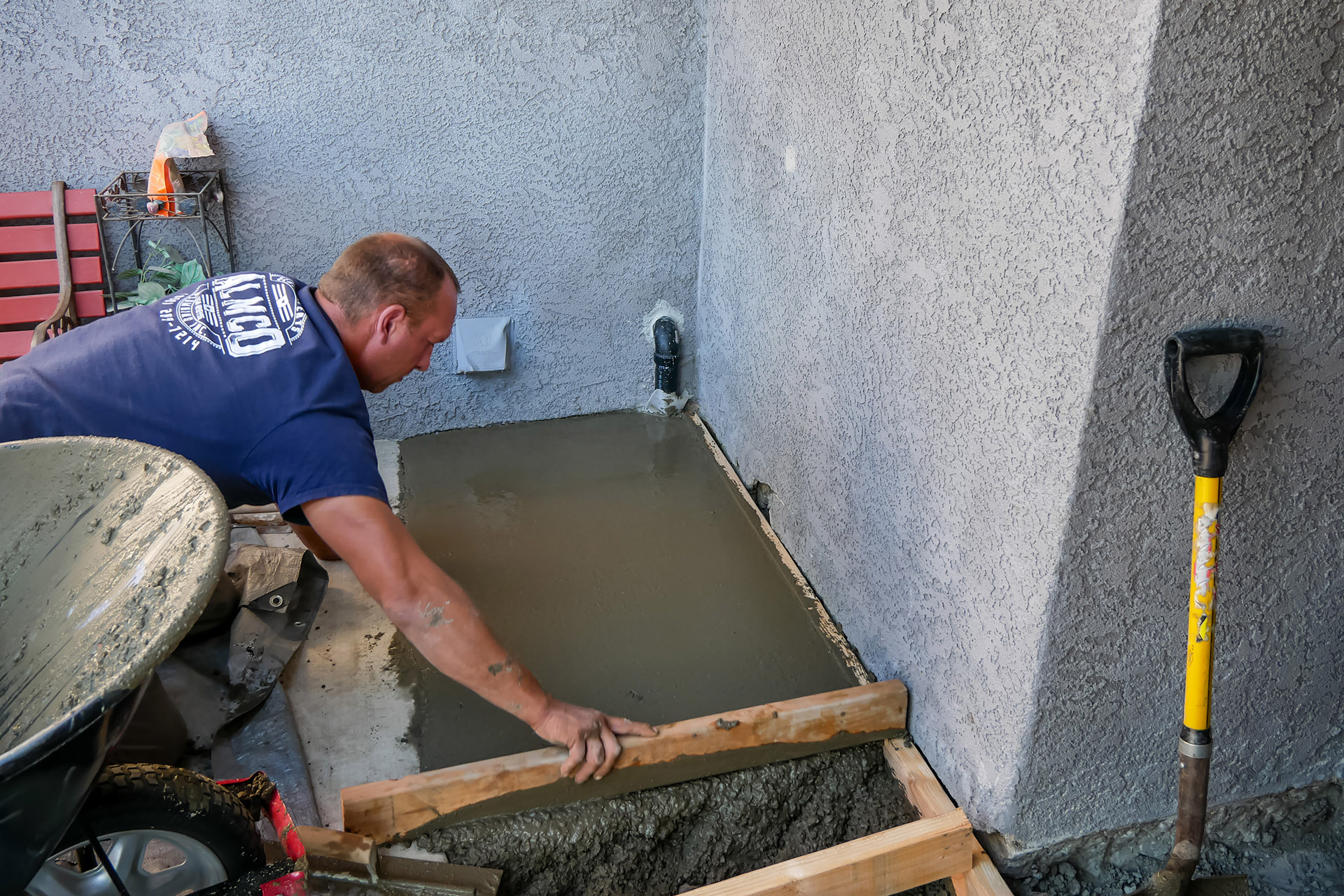

When you’re satisfied the repair is sound:
- Carefully backfill the hole, compacting the soil in layers to prevent future settlement
- Restore the concrete with an appropriate patching compound or replace flooring if indoors
- For crawl spaces, consider adding vapor barriers or insulation as needed
With the pipe repaired and the area restored, your sewer system should be back to normal. Next, we’ll take a look at trenchless repair methods—an option that can sometimes skip many of these steps altogether.
Trenchless Repair Options
Digging through floors or yards to access a broken sewer pipe isn’t always ideal—or even necessary. That’s where trenchless sewer repair methods come in. These technologies enable professionals to repair or replace pipes with minimal disruption to your home’s foundation, flooring, or landscaping. The most common trenchless options are.1. CIPP (Cured-in-Place Pipe) Lining
- A flexible, resin-coated liner is inserted into the damaged pipe
- The liner is then inflated and cured using ambient conditions, warm air, or UV light to create a new pipe inside the old one
- This method is ideal for small cracks, corrosion, or damage
- It can last 50+ years if properly installed
2. Pipe Bursting
- A new pipe is pulled through the old pipe while simultaneously breaking it apart
- This method is best suited for severely damaged or collapsed lines
- It requires access holes at both ends, but it avoids trenching through the whole length
3. Epoxy Pipe Lining
- In this method, the interior of the existing pipe is coated with a layer of epoxy resin. After cleaning and drying the pipe, the epoxy is sprayed or poured inside and allowed to cure, forming a seamless, joint-free barrier
- It works well for minor cracks and corrosion without replacing the entire pipe
- It is best for pipes that are structurally intact but deteriorating on the inside
Benefits of Trenchless Repair
- Minimal Excavation: No need to dig up floors, driveways, or lawns
- Faster Completion Time: Most jobs are completed in one day
- Less Mess: No piles of dirt or debris
- Durable: Repairs often last as long as or longer than traditional pipe replacement
Limitations of Trenchless Repair
- Not suitable for completely collapsed or severely misaligned pipes
- Initial costs may be higher than traditional methods
- Requires specialized equipment and trained professionals
- Some older pipes may not be compatible, depending on the material and condition
Knowing When to Call a Professional
While experienced DIYers can tackle some sewer pipe repairs, there are situations where calling a licensed plumber, such as Almco Plumbing, is the safest and smartest choice. Working under your home, especially with older or deeply buried sewer lines, comes with real risks and challenges that shouldn’t be underestimated. Here are some signs that it’s time to bring in a professional:- Extensive Damage or Total Collapse: If the pipe is crushed, misaligned, or completely deteriorated, the job will likely require specialized tools and techniques.
- Foundation Work: Cutting into concrete slabs or dealing with structural elements requires expert handling to avoid costly mistakes.
- Unclear Pipe Layout: If you’re unsure where the pipe runs or how to access it without damaging other systems, a professional can use inspection cameras and tools to safely map everything.
- Persistent Backups After Repairs: If problems persist after what seemed like a successful repair, there may be a deeper issue requiring advanced diagnostics.
- Trenchless Repairs: These methods are not DIY-friendly. They require specific equipment, materials, and training to be done safely and correctly.
